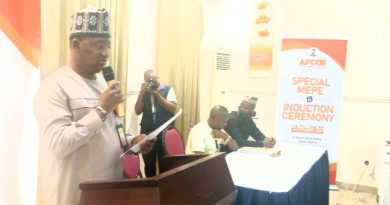NCC, UK to partner on digital inclusion to bridge access gap
The Nigerian Communications Commission (NCC) and the Government of the United Kingdom (UK) have agreed to collaborate on digital inclusion, cyber security and capacity building to bridge digital access gap in Nigeria. Mr Sonny Aragba-Akpore, Assistant Director, Public Affairs, announced this in a statement on Sunday in Abuja.
According to him, the agreement has been reached at the weekend by the Executive Vice Chairman of the commission, Prof. Umar Danbatta. NCC He said the agreement was reached shortly after a meeting with Mr Alessandra Lustrati, Senior Private Sector Development Adviser, Head Digital Inclusion at Department of Foreign International Development (DFID). Lustrati led a high-powered delegation from the UK, who paid him a courtesy visit in Abuja.
Lustrati said the delegation was in NCC to explore how the UK Government could channel a significant intervention to the tune of £1.2 billion to create wealth and posterity in selected countries around the world. “This creation of posterity will leverage on the power of ICT to provide access to unserved and underserved areas in the country. The intervention is also on cyber security and capacity building, three key areas.’’ Lustrati also told the EVC that the UK government was hoping to start the implementation of the intervention in April, 2019. He explained that the project was deliberately made “country-specific” to enable countries like Nigeria choose the nature of the interventions they desire.
Earlier, Danbatta told the delegation that there were 200 access gaps in Nigeria and the commission was looking at different rural technology solutions to plug them in 2 years, as against the 20 years projected. “With the right rural technology solution, we can do it faster because at the rate we are plugging the gaps, it will take us about 20 years to conclude. ‘’These gaps deprive 40 million Nigerians of access to telecommunications services, out of 190 million. “The good thing about getting a solution to the access gap problem is that we know where the gaps are; we have our access gap map; we can actually point out where the gaps are.’’




